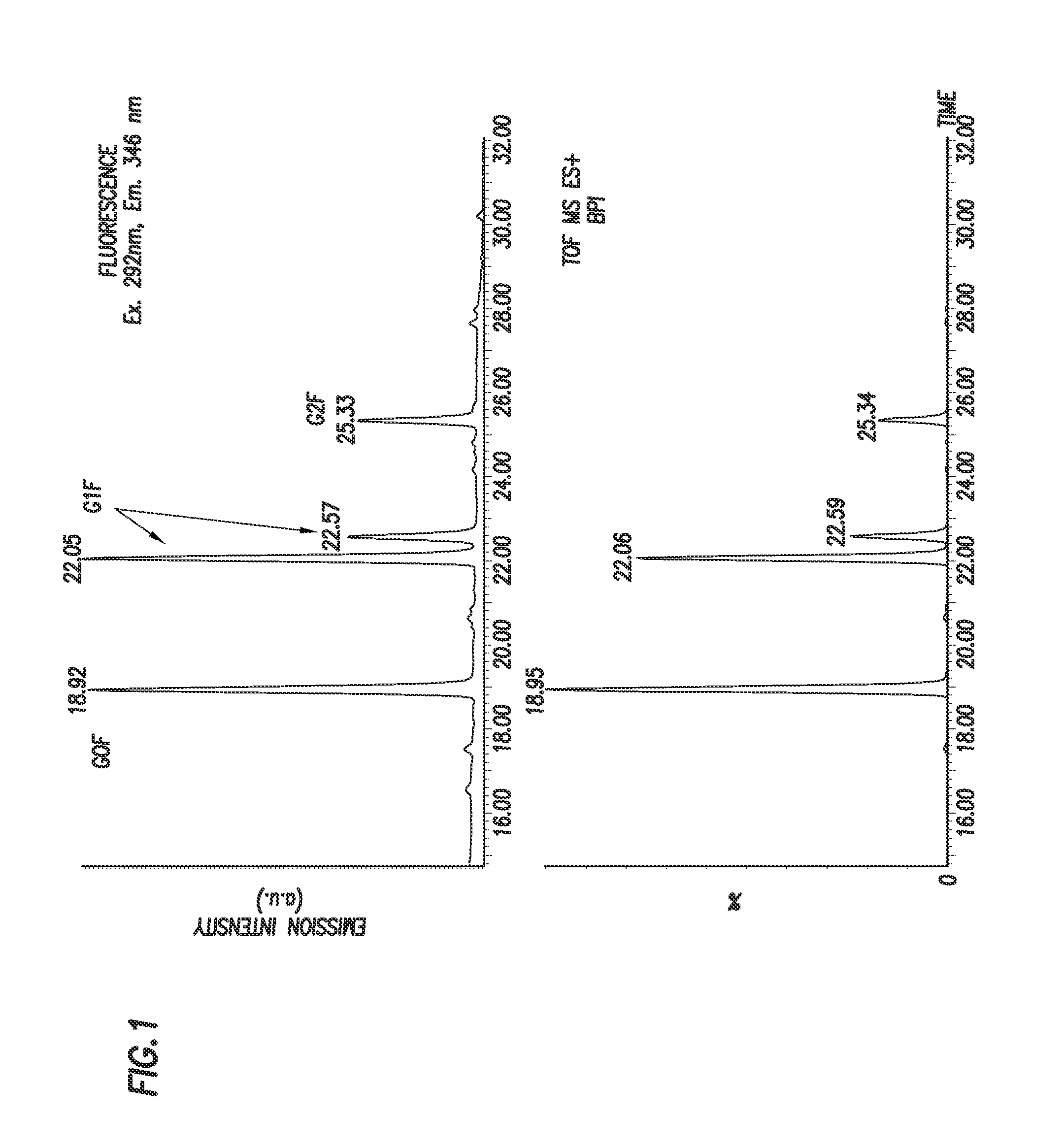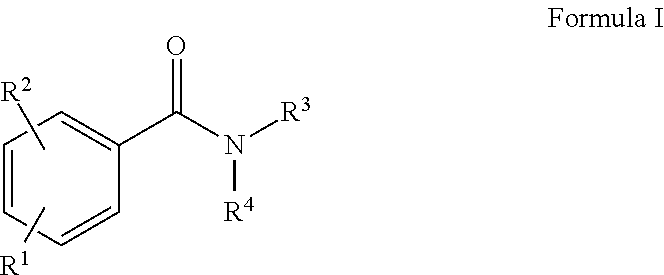Rapid fluorescence tagging of glycans and other biomolecules with enhanced ms signals
- Summary
- Abstract
- Description
- Claims
- Application Information
AI Technical Summary
Benefits of technology
Problems solved by technology
Method used
Image
Examples
example i
Preparation of 2,5-dioxopyrrolidin-1-yl (4-((2-(diethylamino)ethyl)carbamoyl)phenyl)carbamate
[0188]2.6 g of procainamide was added to 47 g of dry acetonitrile in a dry 100 mL Erlenmeyer flask equipped with a stir bar, and allowed to dissolve. In a separate 1 L flask equipped with a dropping funnel and a stir bar, 3.2 g of N,N-disuccinimidylcarbonate (DSC) was dissolved in 417 g of dry acetonitrile, and the system was purged with N2. The solution of procainamide was then transferred to the dropping funnel, and added dropwise to the DSC solution over the course of 1 hour. The solution was then allowed to stir for 4 hours. At this point, the solvent was removed, and the product was dried at room temperature under high vacuum.
example ii
Preparation of 2,5-dioxopyrrolidin-1-yl (4-((2-(diethylamino)ethyl)carbamoyl)phenyl)carbamate
[0189]8.2 g of procainamide was added to 50 mL of dry dichloromethane in a dry 100 mL Erlenmeyer flask equipped with a stir bar, and allowed to dissolve. In a separate 1 L flask equipped with a dropping funnel and a stir bar, 10.1 g of N,N-disuccinimidylcarbonate (DSC) was mixed with 400 mL of dry dichloromethane, and the system was purged with N2. The solution of procainamide was then transferred to the dropping funnel, and added dropwise to the DSC solution over the course of 1 hour. The solution was then allowed to stir for 4 hours. At this point, the desired product was removed from the mother liquor by filtration, then dried at room temperature under high vacuum.
example iii
Tagging of N-Linked Glycans Released from Herceptin
[0190]N-linked glycans were released from 0.8 μg of Herceptin using standard PNGase F protocols prior to labeling with 2,5-dioxopyrrolidin-1-yl (4-((2-(diethylamino)ethyl)carbamoyl)phenyl)carbamate. 2,5-dioxopyrrolidin-1-yl (4-((2-(diethylamino)ethyl)carbamoyl)phenyl)carbamate was solubilized in dry (water free) acetonitrile to a final concentration of 45 μg / μl. 10 μl ot this solution was then added to the to the released glycan sample. This mixture was left at room temperature for 5 minutes. The labeled sample was then lyophilized using a speed vac and reconstituted in 60% acetonitrile / water solution prior to chromatographic separation using a HILIC LC method and analysis by fluorescence and MS detection, as shown in FIGS. 1 and 2.
PUM
| Property | Measurement | Unit |
|---|---|---|
| Fluorescence | aaaaa | aaaaa |
Abstract
Description
Claims
Application Information
 Login to View More
Login to View More - R&D
- Intellectual Property
- Life Sciences
- Materials
- Tech Scout
- Unparalleled Data Quality
- Higher Quality Content
- 60% Fewer Hallucinations
Browse by: Latest US Patents, China's latest patents, Technical Efficacy Thesaurus, Application Domain, Technology Topic, Popular Technical Reports.
© 2025 PatSnap. All rights reserved.Legal|Privacy policy|Modern Slavery Act Transparency Statement|Sitemap|About US| Contact US: help@patsnap.com



